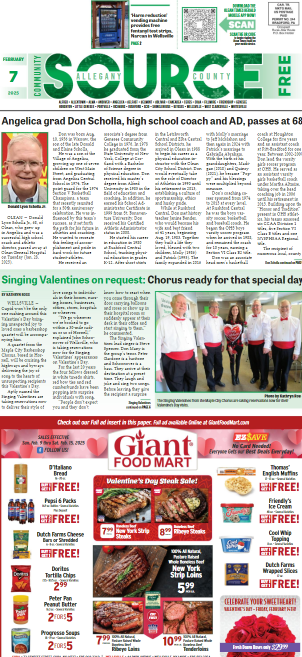The elusive black impala
Scouring the bushveld is an exciting and time-consuming process. The animals are difficult, almost impossible to see as quickly as necessary for a successful stalk and riding high up in the back of the land cruiser is surprisingly tiring.
The rig is constantly swaying back and forth, up and down, side to side, or all of the above at the same moment; bumping occasionally over anteater holes, rocks and the uneven bush track. You, of course, don’t notice this at the time, you’re too busy looking for and at animals and seeing new things, but every muscle is constantly working.
This exercise builds quite an appetite.
Other hazards are occasional overhanging thorn trees. They are no laughing matter. Whitethorn are 1 to-inches long and needle sharp, black thorn the same. Wait-a-bit and other species of thorn have many curved, tiny but amazing tenacious thorns that won’t let go and scratch anything they touch. One inattentive Australian man who should have worn a hat, had a piece of his lower lip torn open. But lips heal surprisingly fast and in no time he was eating normally again.
These back bush, hillbilly Australians took such pride in being inhumanly tough this man’s wife, after viewing his injury, told him to quit whining, eat some cement, toughen up! Wow, there’s love for you.
Though I wore a ball cap occasionally, a wide brimmed floppy hat is preferable. Its circling brim protects your eyes on all sides from the incredibly bright sun and additionally protects the side of your face and ears from unnoticed, overhanging branches. A stiffer brimmed hat would also be acceptable but not as effective. I also recommend a 12-inch length of cord with alligator clips on each end. Clip to the rear of your hat and collar. If a branch pulls your hat off or the wind flips it skyward the cord keeps it attached to you. The wind was the worst offender as I kept a sharp lookout for branches.
However, the majority of your time’s spent constantly scanning the bush for any of the over 21 fascinating animals living here. Any second 1 may appear close at hand or far in the distance. Quality binoculars with a lightweight harness to hold them ready are an absolute must.
Late on the first day, as the sun sloped to the horizon and sky turned blood red, we turned a corner and Vihan pointed. “Black Impala!”
There 30 yards away in a small opening stood 2 coal black male impala’s, 1 with a magnificent set of tall, spiraling horns. What an incredibly beautiful animal I had no idea existed, a stunning antelope! They spun and vanished. A normal, brown and white, large horned impala was on the hit list but the black species immediately stole my heart.
For 5 days we searched for an opportunity at either impala coloration, seeing over 100 daily, but they are very difficult to hunt in the high brush, the branches being higher than their backs. Impala are also extremely flighty and spook at distances of up to 200 yards without hesitation. The females and young herd together, larger males hang in much smaller groups. A large herd is easy to spot, 2, 3 or 4 animals extremely difficult. It would be possible, I believe, to hunt the entire safari without a shot. But as every hunter knows, things happen unexpectedly and very quickly.
After a failed stalk on an Eland, the animals here have incredibly sharp eyes, we approached a corner in which several green shepherd trees blocked the view down the intersecting track. Jaco was guiding us that day and just before turning the corner we noticed a small clearing opening on our left. Amazingly, 25 yards away, just behind a thin screen of branches 2 black impala stood, their graceful heads high, on alert, staring at us. They’d seen movement and weren’t quite sure what we were. Taking no chances they hesitated only a second or 2 before turning and trotting rapidly back into the thorn thickets. Throwing the rifle up I fired the instant the crosshairs touched the animal.
Immediately apprehensive, I realized the crosshairs had been 3-inches behind the rib cage when the rifle went off, the shot totally instinctive and worriedly said so. Jaco laughed at me. “No, no, he was angling away Wade, as you describe it the shot was perfect.”
I glanced over at Sam, our tracker, who gave me one of his big, shy smiles. Sam took the lead so we wouldn’t disturb the spoor as we spread out; Julie to the left, Jaco to the right while I followed Sam who, like a bird dog, was casting slowly left and right following barely discernible tracks, even for him, on the hard ground. After 35 yards he stopped, looked back at me and pointed behind a bush. Rushing up, there lay the impala. What a relief, what joy! I shouted, hugged Sam as Jaco and Julie hurried over.
What a trophy! His coal black body, long spiral horns delicately curving up and up, impressively beautiful in their mathematical symmetry. Kneeling beside the black, glossy coated animal I marveled at this wonderful, so elusive creature. How very, very fortunate to be here with my daughter, at this time, in this place, so appreciative and most especially, thankful for all my blessings.
Help Our Community
Please help local businesses by taking an online survey to help us navigate through these unprecedented times. None of the responses will be shared or used for any other purpose except to better serve our community. The survey is at: www.pulsepoll.com $1,000 is being awarded. Everyone completing the survey will be able to enter a contest to Win as our way of saying, "Thank You" for your time. Thank You!







